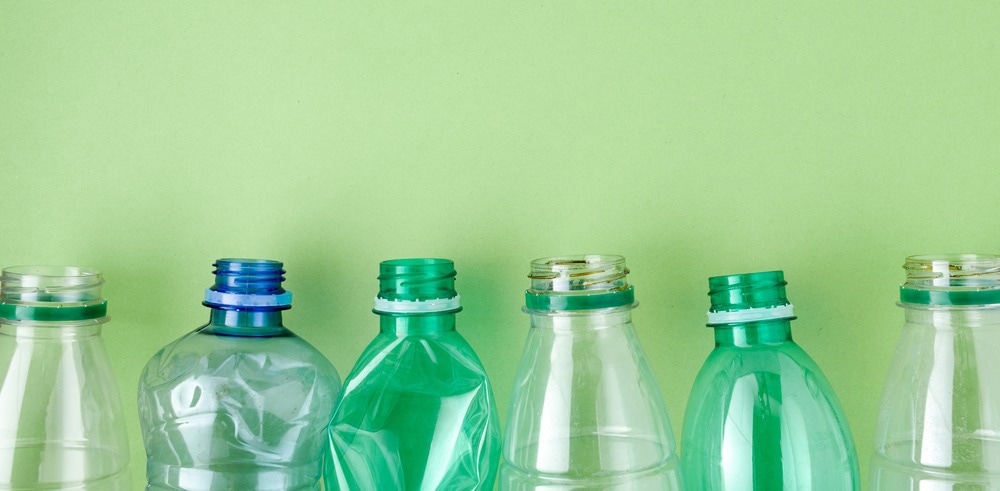Research efforts led by the group of Professor Michael Shaver from the Department of Materials, School of Natural Sciences at the University of Manchester, have devised a fluorescence-based analysis method to determine the amount of recycled constituents in plastic and plastic packages intended for single usage. They presented their findings in ACS Sustainable Chemistry & Engineering.

Study: Recycled Plastic Content Quantified through Aggregation-Induced Emission. Image Credit: Alliance Images/Shutterstock.com
Specific forms of plastics have long been identified as detrimental to the environment. Impactful and actionable change is required as 40% of global landfill is estimated to contain plastic-based materials. Plastic-related pollution has been found in all habitable environments worldwide.
Governments and international institutions are now addressing these societal worries regarding plastic pollution. The UN's Sustainable Development Goals target a drastic recycling rate boost by 2030.
Mechanical recycling is the most energy-efficient route for plastics at the end of their use. Therefore, improving recycling efficiency and technology is crucial. However, using recycled materials is prohibitive due to the higher cost associated with the technology available. The successful implementation of recycling continues to be a financial obstacle to the economy.
Efficient management of recycled plastic in everyday circulation is expected to have a positive effect. By incorporating more recyclate, also referred to as post-consumer resin (PCR), plastic waste management errors can be avoided, and greenhouse gas emissions can be cut by up to 15%.
Current Methods Used For Evaluating Plastic Content
The mass balance method is currently employed to monitor the flow of recycled feedstocks into and out of manufacturing plants. The same method is employed to monitor supply networks.
Mass balance has proven to be a costly and time-consuming method. It is also unable to determine the exact amount of recycled material in a finished product and is not yet suitable for chemically recovered plastics.
Molecular weight estimates is another protocol that has been widely used for PCR concentration measurements. Molecular weight can be obtained using mass spectrometry, differential scanning calorimetry, and rheology with variable degrees of accuracy. But variations in production conditions, polymer grade, additives, and subsequent chemical reactions all significantly impact the molecular weights estimates.
Aggregation-Induced Emission Method
The Food and Drug Administration (FDA) and the Registration, Evaluation, Authorization and Restriction of Chemicals (REACH) have approved 4,4-Bis(2-benzoxazolyl) stilbene (BBS), a polymer additive with exceptional spectroscopic qualities and excellent thermal stability.
BBS is a member of a group of compounds that experience an aggregation-induced bathochromic shift, resulting in aggregation-induced increased emission. The fluorescence emissions from these two BBS forms, monomer and dimer, are discernible and observable.
Prof. Michael Shaver and his colleagues utilize the heightened BBS emission caused by the aggregation to develop a unique yet valuable PCR content estimation methodology.
Developing the Fluorescence-Based Analytical Technique
Due to its widespread use in mechanical recycling and single-use packaging, high-density polyethylene (HDPE) was first paired with BBS for analysis. Carefully designed spectroscopy experiments then detect fluorescence emission. Fluorescence intensity ratios were calculated to compare the sample's target molecular content.
Only 0.1% of the total HDPE material was laced with BBS. Given the low dye loadings and strong linearity between the intensity ratio and recycled content, this concentration is suitable for application in an industrial context.
A multifaceted quantification process is required to avoid false positives when measuring recycled content. Excitation wavelength and excitation duration studies of fluorescence lifetimes offer more molecular specificity than emission events. These are also independent of measuring circumstances.
As described in detail in the journal article, confocal microscopy helped examine the link between aggregate sub-structures and BBS concentration.
The newly developed process expands the applicability of the fluorescent-marked PCR idea to institutions without access to specialist fluorescence equipment. It also provides another methodology for measurement. This technology makes it possible to compare unknown mixed samples to established reference standards.
The aggregation-induced emission method experimented on polypropylene (PP) and polylactic acid (PLA), expanding from HDPE. The fluorescent marking approach has been successful in all three samples studied, representing about 40% of the demand for plastic in the EU (19.4% for PP, 12.4% for HDPE, and 7.9% for PET). These percentages rise even higher in single-use plastic packaging products. This fluorescence-based technology would be compatible with the bulk of the plastic market if it were expanded to include the chemically identical low-density polyethylene (LDPE).
Identifying Recycled Materials
In this research, Prof. Michael Shaver's team has developed a process-independent technique to identify recycled material in HDPE, PP, and PET. Their method could mark a turning point in global attempts to raise mechanical recycling rates across the plastics sector.
Fluorescence intensity, longevity, and color are three different metrics that can quantify subsequent individual plastic parts without interfering with already-running operations.
BBS is affordable, easily accessible, and has already been approved by the FDA and REACH for use in most food contact applications.
References
Zoé O. G. Schyns, Thomas M. Bennett, and Michael P. Shaver. Recycled Plastic Content Quantified through Aggregation-Induced Emission. ACS Sustainable Chemistry & Engineering. https://pubs.acs.org/doi/10.1021/acssuschemeng.2c03389
Disclaimer: The views expressed here are those of the author expressed in their private capacity and do not necessarily represent the views of AZoM.com Limited T/A AZoNetwork the owner and operator of this website. This disclaimer forms part of the Terms and conditions of use of this website.